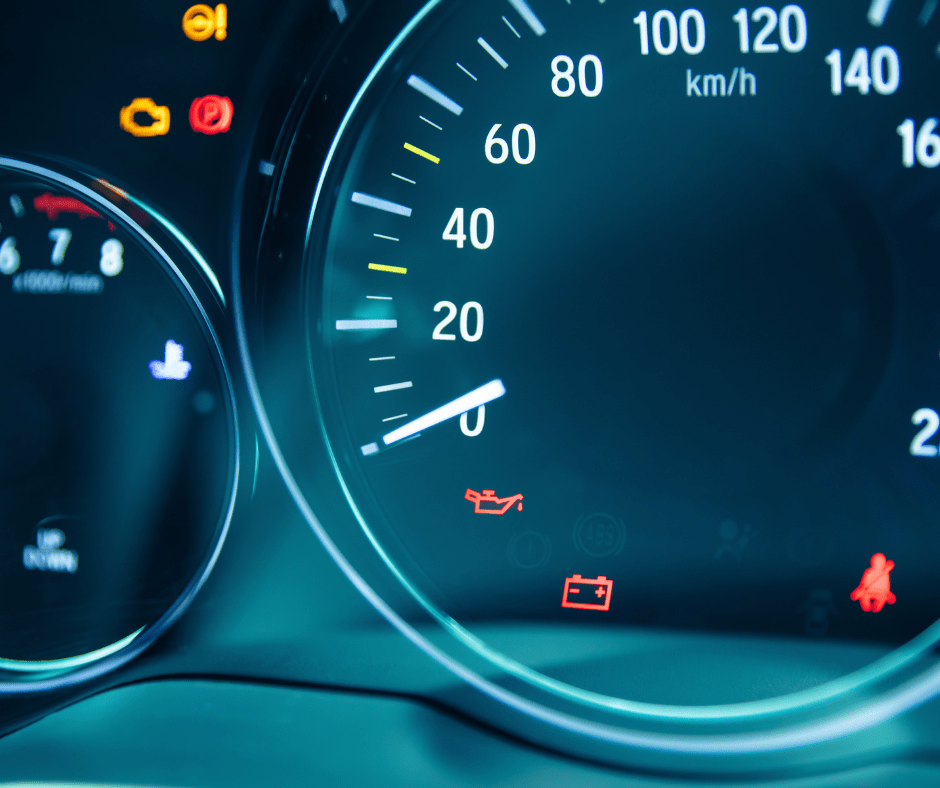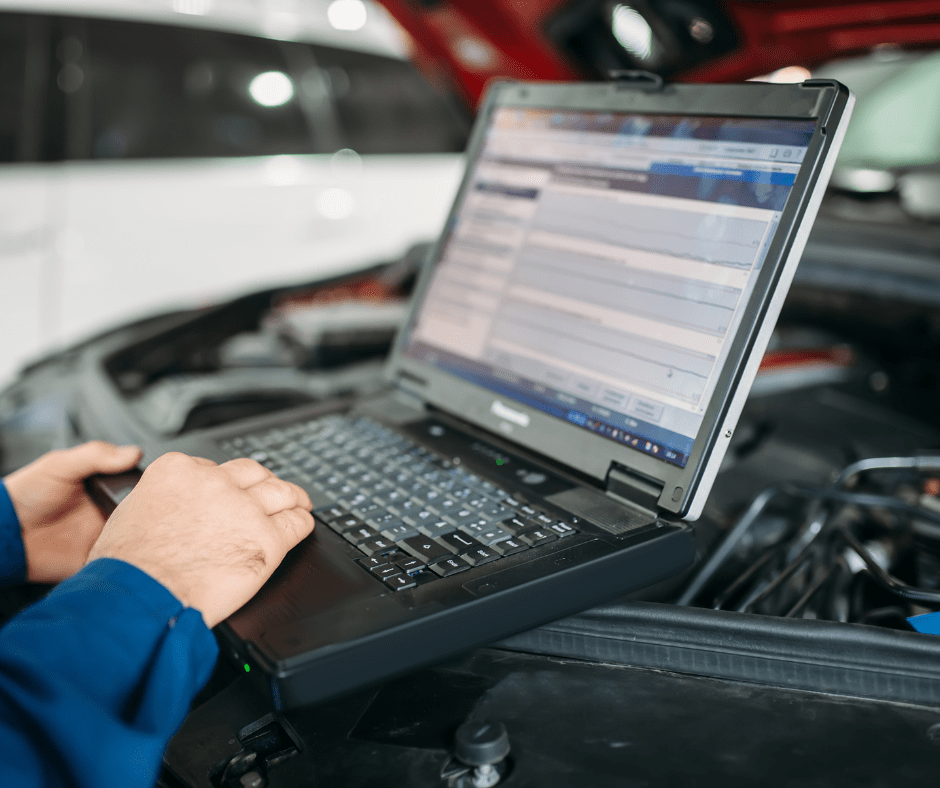Engine lights are your car’s way of letting you know something needs attention. When we ignore engine lights, we’re ignoring warning indicators for potential problems with the vehicle’s motor or related systems.
This is a dangerous habit and not one any good mechanic would recommend.
Fortunately, you can become a better car owner by paying attention to (and acting on) your car’s warning lights.
In this blog, we’ll discuss the five most common engine lights vehicle owners tend to see, how routine auto maintenance can help prevent them, and what to do about each.
First Things First: What are Engine Lights?

Engine lights are also known as “dashboard warning lights” or “malfunction indicator lights (MILs, for short). These handy lights are tiny illuminated symbols that pop up on a car’s dashboard or instrument panel.
In most modern cars, they’re part of the vehicle’s onboard diagnostic system (OBD). When they appear, they indicate a potential problem with the car’s engine or other systems.
Here’s a quick overview of how engine lights work:
- Your car’s computer system detects an issue in the car’s engine or one of its important components.
- The computer system triggers a corresponding warning light, which then pops up on the dashboard.
- The warning light alerts the driver to the problem.
- The driver (hopefully) takes the car to a mechanic for evaluation and repair.
As you can see, engine lights serve a critical safety purpose in modern cars. If you ignore the engine lights on your vehicle, it can lead to further damage, decreased performance, and safety risks.
The 5 Most Common Engine Lights
The five most common engine lights drivers see include the following:
1. Check Engine Light (CEL)
The “check engine light” is a warning light that indicates a general issue with the engine or with the car’s emissions system.
This light can be triggered by various factors, including but not limited to tripped sensors, loose gas caps, a problem with your car’s transmission, or faulty catalytic converters. In rare cases, a check engine light may indicate a severe issue, like internal engine failure.
If your check engine light comes on, do not ignore it. Doing so can turn what would have been a quick fix into a large, costly, and time-consuming repair.
2. Oil Pressure Light
Your car’s oil pressure light is meant to alert you to problems with your car’s engine oil. Specifically, this light alerts you when your car’s engine’s oil pressure drops below the recommended level. The reasons for an oil pressure light include the following:
- Low oil levels
- A faulty oil pump
- Oil leaks
- Dirty oil
- A faulty oil pressure sensor
When your oil pressure warning light comes on, take your car to the nearest mechanic for a thorough diagnosis. While the issue could be small, it’s important to catch and address it early.
3. Battery/Charging System Light

A car’s battery light suggests that there’s a problem with the vehicle’s charging system, electrical system, or the battery itself. Here are a few of the most common reasons a battery light may come on:
- A faulty alternator
- Loose wiring
- A drained battery
- Corroded cable terminals
- Damaged cells or plates inside your battery
- A battery that’s leaking electrolyte
If your battery light comes on, address it promptly. Ignoring the light could result in a dead battery and a car that won’t start, no matter how many times you try to jump it.
4. Tire Pressure Monitoring System (TPMS) Light
The Tire Pressure Monitoring System (TPMS) light alerts drivers to issues with their tires. Specifically, this light indicates that the tire pressure is too low, which could create dangerous or unsafe driving conditions.
When the light comes on, it indicates that one or more of the tires has low pressure. If you ignore a TPMS light and keep driving, you could cause undue tire wear, possible tire failure, or blowouts.
While the reasons for a TPMS light vary, some of the most common include changes in temperature, tire leaks, or underinflated tires.
5. ABS Warning Light
The Anti-Lock Braking System (ABS) light exists to highlight problems with the car’s anti-lock brake system. When the light comes on, it could indicate any of the following problems:
- A malfunctioning sensor
- A faulty ABS module
- A blown fuse in the system
- Issues with the car’s wheel-speed sensor
- Broken wires between the ABS controller and the sensors
- An ABS controller that doesn’t work anymore
- Larger issues with the braking system
For the vehicle to be safe, the ABS system needs to function well. Because of this, it’s essential to address ABS warning lights promptly.
What to do When Your Engine Lights Come on

Is there a new check engine light on your dashboard? If so, don’t panic. Remember that check engine lights can be triggered by various issues – some of which are serious, some of which are minor.
Here’s what to do if you’ve noticed a new light on your car’s dashboard:
Take your car to a mechanic for a comprehensive evaluation. Usually, diagnosing engine lights is simple.
The mechanic will just hook your car up to a computer and run its codes. Depending on what comes up, they’ll know whether the issue requires a repair or just a simple computer reset.
No matter what the case may be, diagnosing the check engine light is essential. Do not wait to diagnose engine lights!
If you can’t get to a mechanic right away, consult your owner’s manual instead. The manual will help you understand what the check engine light could mean and may include troubleshooting tips to help you problem-solve the engine light.
DeBroux Automotive: Your Source for Reliable Auto Repair in Pensacola
Does your car have new engine lights on the dashboard? Are you looking for a reliable Pensacola mechanic to help you maintain your vehicle’s essential system, including the transmission or oil and electrical systems?
Look no further than DeBroux Automotive.
Our team provides comprehensive preventative maintenance and auto repair to help your car stay safe, reliable, and efficient – no matter where you’re headed next.
